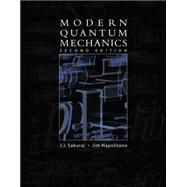
The late J.J. Sakurai, noted theorist in particle physics, was born in Tokyo, Japan in 1933. He received his B.A. from Harvard University in 1955 and his PhD from Cornell University in 1958. He was appointed as an assistant professor at the University of Chicago, where he worked until he became a professor at the University of California, Los Angeles in 1970. Sakurai died in 1982 while he was visiting a professor at CERN in Geneva, Switzerland.
Jim Napolitano earned an undergraduate Physics degree at Rensselaer Polytechnic Institute in 1977, and a PhD in Physics from Stanford University in 1982. Since that time, he has conducted research in experimental nuclear and particle physics, with an emphasis on studying fundamental interactions and symmetries. He joined the faculty at Rensselaer in 1992 after working as a member of the scientific staff at two different national laboratories. He is author and co-author of over 150 scientific papers in refereed journals.
Professor Napolitano maintains a keen interest in science education in general, and in particular physics education at both the undergraduate and graduate levels. He has published a textbook, co-authored with Adrian Melissinos, on Experiments in Modern Physics. Prior to his work on Modern Quantum Mechanics ,Second Edition, he has taught both graduate and upper-level undergraduate courses in Quantum Mechanics, as well as an advanced graduate course in Quantum Field Theory.
1. Fundamental Concepts
1.1. The Stern-Gerlach Experiment
1.2. Kets, Bras, and Operators
1.3. Base Kets and Matrix Representations
1.4. Measurements, Observaables, and the Uncertainty Relations
1.5. Change of Basis
1.6. Position, Momentum, and Translation
1.7. Wave Functions in Position and Momentum Space
2. Quantum Dynamics
2.1. Time Evolution and the SchröDinger Equation
2.2. The SchröDinger Versus the Heisenberg Picture
2.3. Simple Harmonic Oscillator
2.4. SchröDinger's Wave Equation
2.5. Elementary Solutions to SchröDinger's Wave Equation
2.6. Propogators and Feynman Path Integrals
2.7. Potentials and Gauge Transformations
3. Theory of Angular Momentum
3.1. Rotations and Angular Momentum Commutation Relations
3.2. Spin 1
3.3. SO(e), SU(2), and Euler Rotations
3.4. Density Operators and Pure Versus Mixed Ensembles
3.5 Eigenvalues and Eigenstates of Angular Momentum
3.6. Orbital Angular Momentum
3.7. SchröDinger's Equation for Central Potentials
3.8 Addition of Angular Momenta
3.9. Schwinger’s Oscillator Model of Angular Momentum
3.10. Spin Correlation Measurements and Bell’s Inequality
3.11. Tensor Operators
4. Symmetry in Quantum Mechanics
4.1. Symmetries, Conservation Laws, and Degeneracies
4.2. Discrete Symmetries, Parity, or Space Inversion
4.3. Lattice Translation as a Discrete Symmetry
4.4. The Time-Reversal Discrete Symmetry
5. Approximation Methods
5.1. Time-Independent Perturbation Theory: Nondegenerate Case
5.2. Time-Independent Perturbation Theory: The Degenerate Case
5.3. Hydrogenlike Atoms: Fine Structure and the Zeeman Effect
5.4. Variational Methods
5.5. Time-Depedent Potentials: The Interaction Picture
5.6. Hamiltonians with Extreme Time Dependence
5.7. Time-Dependent Perturbation Theory
5.8. Applications to Interactions with the Classical Radiation Field
5.9 Energy Shift and Decay Width
6. Scattering Theory
6.1. Scattering as a Time-Dependent Perturbation
6.2 The Scattering Amplitude
6.3. The Born Approximation
6.4. Phase Shifts and Partial Waves
6.5. Eikonal Approximation
6.6. Low-Energy Scattering and Bound States
6.7. Resonance Scattering
6.8. Symmetry Considerations in Scattering
6.9 Inelastic Electron-Atom Scattering
7. Identical Particles
7.1. Permutation Symmetry
7.2. Symmetrization Postulate
7.3. Two-Electron System
7.4. The Helium Atom
7.5. Multi-Particle States
7.6. Quantization of the Electromagnetic Field
8. Relativistic Quantum Mechanics 331
8.1. Paths to Relativisitic Quantum Mechanics
8.2. The Dirac Equation
8.3. Symmetries of the Dirac Equation
8.4. Solving with a Central Potential
8.5. Relativistic Quantum Field Theory
Appendices
A. Electromagnetic Units
A.1. Coulomb’s Law, Charge, and Current
A.2. Converting Between Systems
B. Brief Summary of Elementary Solutions to ShröDinger's Wave Eqation
B.1. Free Particles (V=0)
B.2. Piecewise Constatn Potentials in One Dimension
B.3. Transmission–Reflection Problems
B.4. Simple Harmonic Oscillator
B.5. The Central Force Problem (Spherically Symmetrical Potential V=V(r)]
B.6. Hydrogen Atom
The New copy of this book will include any supplemental materials advertised. Please check the title of the book to determine if it should include any access cards, study guides, lab manuals, CDs, etc.
The Used, Rental and eBook copies of this book are not guaranteed to include any supplemental materials. Typically, only the book itself is included. This is true even if the title states it includes any access cards, study guides, lab manuals, CDs, etc.